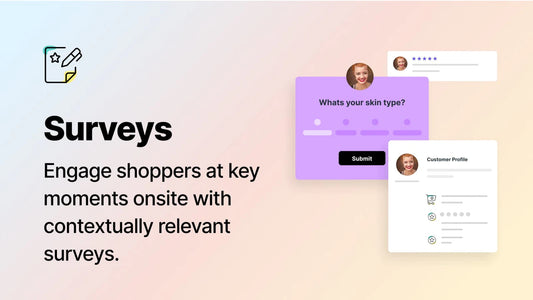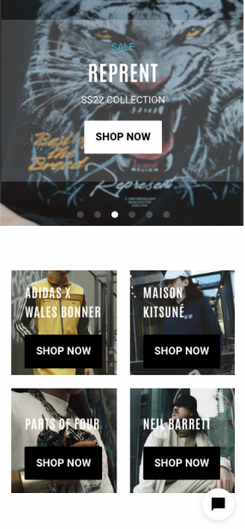Once again, we’re delving into what often seems like the complicated side of eCommerce. We don’t want to scare you away with big words, of course, but these are important. And trust us when we say you’ll thank us. Once the penny drops, you’ll understand your business even better than before.
So, let’s begin with data analysis.
What is Data Analysis, and Why Is It Important?
Data analysis is a crucial part of optimising your eCommerce strategies. Why? Because it allows you to seep into the minds of your customers and see what they’re doing behind the scenes. Analysing your data also allows you to make changes to your eCommerce business—and we don’t mean a complete rebrand.
So, let’s discuss some use cases for data analysis:
Business Development
No business is a one-setup solution. A successful eCommerce store needs consistent nurturing and optimisation (even if you’re the most successful in your industry). Data analysis helps you to develop your business by telling you where you can enhance the customer journey. Whether your products, your customer service, or your on-site store’s functionality, data can tell you where you’re lacking in an unbiased manner.
Customer Retention
Many focus on customer acquisition, but customer retention should often be the main focus. By ensuring your retention efforts are at the highest standards, you’ll ensure the long-term success of your business. Customer retention is also often cheaper and can be done easily by analysing the activity of your customer base—how they travel through your site, what they like and dislike, and what their general thoughts are—these can all help you in boosting your customer retention.
Target Your Marketing Efforts
By analysing the correct data, you may find different areas in which you can target your marketing. For instance, customers may feel your post-purchase communication could be improved. You can use this information to enhance your marketing strategy and nurture your customers even after they’ve made a purchase. Of course, this is just one example, and there are myriads of other marketing improvements you could make based on data analysis alone.
While those are only three use cases, there are many more. But the trick is to collect the right type of data at the right time. The two types of data we’re focusing on today are quantitative and qualitative data—which stand out as valuable resources for gaining insights into customer behaviour and improving overall user experience.
And while we look at these, we’ll look at the significance of each type of data, explore when and how to use them, and discuss popular methods of collecting each type of data.
What Quantitative Data Means for Your Shopify Store
Quantitative data refers to numerical or measurable information obtained through structured methods. In layman’s terms? It’s all the numbers that pop up in whatever analysis or research you’re conducting. It provides insights into customer behaviour, trends, and patterns. When analysed correctly, it reveals clues about what might be going wrong in your eCommerce store. At Blend, we use quantitative data to measure a multitude of metrics, including CX and CLV, while leveraging the collected data to come up with new and unique ideas to enhance our clients’ strategies.
Quantitative data contains no bias. For example, if your store’s Average Order Value is £20, there’s no tweaking those numbers unless you tweak your strategy. The data you collect here are simple facts about how your eCommerce store is performing. The only way to change them and improve them is to change the efficacy of your strategies. But before you worry about changing your strategy, you need to think about how and when you’ll be collecting this data. There is a mountain of tools you can use to collect your quantitative data, including Shopify’s Analytics page, Google Analytics, and Omniconvert and depending on your goals, you’ll have to find the one that works for you.

When is the Best Time to Use Quantitative Data?
Quantitative data should be collected consistently and analysed over time to identify trends and patterns so that you, as an eCommerce leader, can easily make data-driven decisions. It can be utilised in various scenarios, such as monitoring website traffic, tracking conversion rates, and measuring Customer Lifetime Value.
What Can You Learn from Quantitative Data?
You can uncover a plethora of valuable information with quantitative data, such as customer demographics, purchasing patterns, browsing habits, cart abandonment rates, and the effectiveness of your marketing campaigns. These will help you understand customer preferences, optimise product offerings, and enhance the overall user experience.
How to Collect Quantitative Data
There are many ways and tools you can use to collect this data, but here are some of our favourites:
- Website Analytics: Utilising tools like Google Analytics to track your website traffic, page views, and more will allow you to see what’s happening with visitors on your website.
- Hotjar Funnels: You can make use of Hotjar Funnels to quickly visualise your quantitative metrics like drop-offs and conversion rates on your store. Read more about Hotjar’s quantitative data collection here.
- Sales and CRM Systems: You can extract data from sales records and customer relationship management (CRM) systems, like Reveal, to analyse your customers’ purchasing patterns, order values, and customer behaviour.
- Cohort Analysis: Automated Analytics tools like Peel Insights, allows you to collect all the necessary quantitative data as well as a cohort analysis to measure the health of your eCommerce store and build actionable insights to boost your store’s performance.
Surveys and Questionnaires: You can create structured surveys to collect quantitative data, such as NPS Surveys, to ascertain customer satisfaction with your brand and products. These surveys can easily be created using Omniconvert.
Your main goal for collecting quantitative data is to increase your Customer Lifetime Value. At Blend, our main focus is Customer Lifetime Value. Why? Because if you can’t keep your current customers around, you’re wasting money acquiring new customers. Ensuring your customers are happy at every stage of their customer journey with your brand (which includes immediately after they’ve made a purchase) means they’ll keep coming back. But increasing your Customer Lifetime Value comes a lot easier when you have the answers to crucial questions.
Quantitative data doesn’t provide the “why”, and these questions often remain unanswered:
→ Why aren't they returning?
→ Why are customers abandoning their carts?
→ Why do they choose one product over another?
→ What prevents them from becoming loyal customers?
→ What dissuades them from purchasing more frequently?
That’s where qualitative data enters the building.
How Will Qualitative Data Impact Your Shopify Store?
Qualitative data involves non-numerical information that provides a much deeper understanding of customer opinions, motivations, and experiences. While quantitative data provides clues, qualitative data confirms what might be going wrong in an eCommerce store. What does this mean? Qualitative data is a reminder that your customers are human. They have emotions when they visit your store, make a purchase, and use your products. And if you can use those emotions to implement changes to your strategies that will make their customer journey like a warm welcome home, your store’s CLV will climb, and so will the long-term success of your eCommerce business.
Sure, while quantitative data gave you the facts, you won’t know the reasons behind those facts. For example, your quantitative data could tell you that customers are dropping off at the checkout page. While you can spend weeks and possibly months testing out different theories by assuming what the problem is, without collecting the necessary qualitative data, you won’t know what the truth behind the problem is. Qualitative data allows you to understand better who your customers are, where they are in their journey, and what they need from you. You may be surprised to learn about struggles you’ve never thought of. Fixing what may seem minuscule can have a large impact on your customers’ experiences with your brand and have a large boost on your CLV.

When is the Best Time to Use Qualitative Data?
Qualitative data collection is particularly valuable when businesses need to understand the underlying reasons behind quantitative trends. It assists in exploring customer emotions, preferences, and pain points in-depth and in relation to quantitative data gathered, all providing a richer context for decision-making.
Boosting Your CLV with Qualitative Data
Qualitative data provides insights into customer perceptions, opinions, and experiences. It helps uncover why customers abandon carts, what frustrates them during the checkout process, or what motivates them to make a purchase in the first place. By understanding these qualitative aspects, eCommerce brands like yours can enhance your customer satisfaction and tailor your offerings accordingly.
How to Collect Qualitative Data
Like with quantitative data, there are many ways to collect qualitative data, and here are a few:
- Web Surveys and Interviews: Conduct online surveys or interviews so you can gather in-depth feedback from customers. These methods allow respondents to provide detailed responses, elaborating on their thoughts and experiences. Ensure to define your objective before planning out your survey. Keep the survey short, ensure open-ended and multiple-choice questions, and show gratitude towards the customer for taking the time to complete your survey.
- User Testing and Observations: Observe and analyse user behaviour through usability testing, heatmaps, and session recordings to understand how customers interact with your eCommerce store—meaning you can enhance the on-site customer journey. User testing will help to identify pain points, improve usability, enhance product appeal, optimise your conversion funnel, and inform your future development.
- Jobs-to-be-Done (JTBD) Framework: Utilise the JTBD framework to understand the functional and emotional needs that customers aim to fulfil when using your product or service.
How Blend Will Use Quantitative & Qualitative Data to Boost Your CLV
At Blend, we have utilised the collection and analysis of both qualitative and quantitative data to implement strong actions both to clients’ marketing strategies and development and design strategies. We know the importance of using these two types of data together and how they will impact your Customer Lifetime Value and customer retention, and how it improves idea generation.
By combining both types of data, you can gain comprehensive insights to guide strategic decisions and deliver a more personalised and satisfying shopping experience for your customers. The key lies not only in collecting this data but also analysing and leveraging it effectively. We won’t wait for you to give us ideas. Once we have the go-ahead, we’ll hit the ground running by collecting data, brainstorming idea generation, and bringing you ideas that will improve your metrics like AOV, CR, CLV, CVO, and more, all with the use of both quantitative and qualitative data.
If you want to embrace the power of quantitative and qualitative data to gain a competitive edge and drive the success of your eCommerce brand, get in touch with Blend today.








